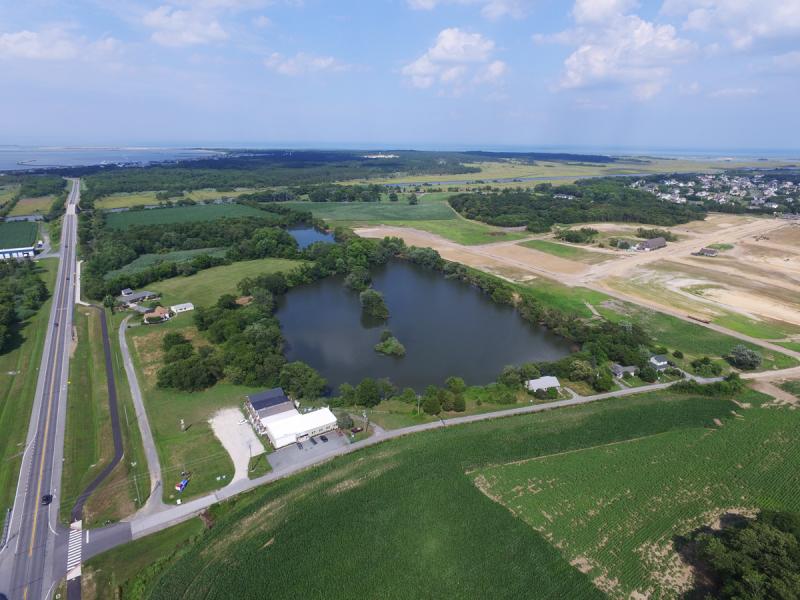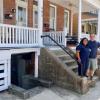White’s Pond: watering hole for Otis Smith’s cows
Most people in the Lewes area have never heard of White’s Pond. Blockhouse Pond, yes. White’s Pond, where’s that?
The two-sectioned, 16-acre pond with small islands in the center is tucked into a corner of property near the intersection of Monroe Avenue and Freeman Highway.It’s surrounded by tall trees, a collection of commercial buildings, and a few small, uninhabited homes on Monroe, but few ever see the pond except for migrating geese and egrets and occasional humans that fly over.
As part of the new Showfield development, bordering the community’s northwestern edge, White’s Pond will be much more visible and prominent in the next several decadaes than it has been in the last 50 years.
Phil Cunningham owns property and has lived along the Freeman Highway side of the pond for many years. “It was marsh at one time. Otis dredged it out to get water for his cows. He had champion polled Herefords and kept them out in the fields around the pond. It’s fresh water. Mainly rainwater I think. There’s a stream that runs from the pond all the way to the canal. When the pond gets full it runs into the canal.”
A one-way water gate at the canal end of the stream lets water out but won’t let saltwater in when nor’easters get the canal’s dander up.
Pond construction came during the heyday of Smith’s Fish Products menhaden processing facility. The Cape Shores community stands there now, fronting Delaware Bay near the Lewes entrance to Cape Henlopen State Park. The Smith fleet’s catches of menhaden - used for meal, fertilizer and oil - made Lewes the nation’s largest port for fish landings by tonnage in the early 1950s. It was during those years that Otis and his wife Hazell were overseeing construction of the brick mansion fronting Gills Neck Road and the unique vaulted barns on the large farm for horses and cattle.
Rob Gibbs’ father, Bob, operated Gibbs Paint and Chemical Company in the commercial buildings on the property he owned at the western end of White’s Pond. “All I remember as a little kid is hearing my father say that it was a man-made pond that might have involved federal money as part of a program that benefitted wildlife,” said Gibbs. “I remember every year thousands and thousands of Canada geese coming into the pond. It was covered with geese. A lot more than now. Someone said they might not be coming in as much because its edges are overgrown and they can’t get in and out like they used to.”
Back in the 1970s and ‘80s, there was a metal sign on a post near the pond that identified it as a wildlife refuge. Through the years the pond has hosted otters, summertime flocks of roosting egrets and lots of other wildlife attracted to fresh water.
Chris Horsch works at the library for the United States Fish and Wildlife Service in Shepherdstown, West Virginia. He said lots of Delaware property owners took advantage of a federal program that lasted about 30 years in the second half of the 20th century. Though he could find no specific records for White’s Pond, he said it’s not unlikely that it would have been part of the program. “It was a farm program that funded the construction of stock water ponds,” he said. “It also had an early aquaculture component. Fish were supplied for free from hatcheries in the region. They helped maintain the water quality and provided some recreation as well. The ponds were funded with money collected as taxes on the sale of sporting goods and the like.”
As for the origin of the name, White’s Pond, no one seems to know. Just one guess: As a long-term mayor of Lewes, Otis Smith may have known of one of Lewes’s Revolutionary War celebrities, Capt. Peter White. Maybe the good mayor wanted to memorialize White’s service to his country with a beautiful pond named in his honor.




















































